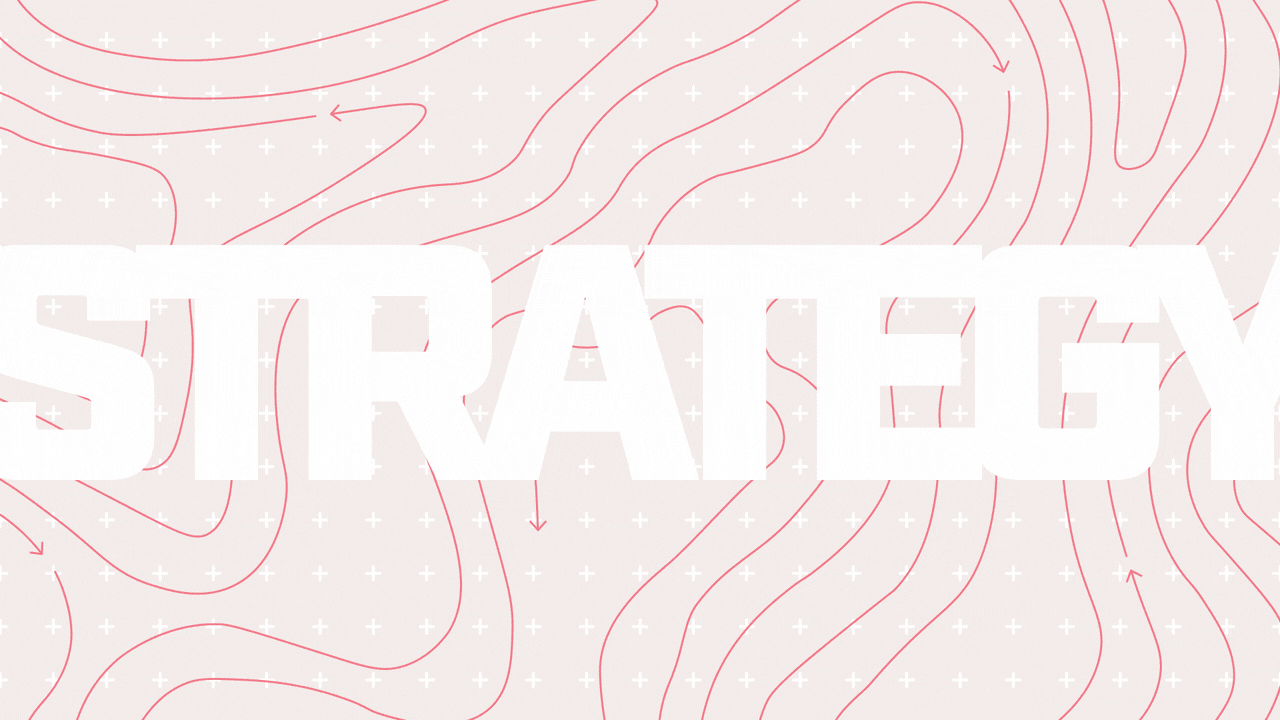If there’s one thing the recent shift in commerce has proven, it’s that a good website is necessary for businesses to survive.
And much like the age-old question about trees falling in the forest, the same point can be made about a business. If your business doesn’t have a website, does it really exist?
We won’t spend much time convincing you that you need a website (spoiler: you do). Instead, we’ll tackle a tough question that faces many businesses in need of a website: Should I partner with a company for a custom-built website or should I use an online service where I can build my own?
We live in a world that values convenience and simplicity. But our grab-and-go mindset doesn’t stop at our lunchtime decisions. We expect accessibility and ease in our daily lives, and many online services today offer to meet our expectations when it comes to building a website, too.
Dozens of services online, such as Squarespace and Wix, present users with the opportunity to build a beautiful website by themselves with little hassle. They tout best-in-class website templates, simple customization, and seamless functionality on desktop and mobile devices—not to mention all of these benefits are available at a low monthly cost.
But as the saying goes, if it seems too good to be true, then it probably is. Certainly, these out-of-the-box websites have value. Plenty of individuals and organizations can benefit from a website that is easy to set up and customize. However, businesses that have specific goals and requirements for their website may discover that the constraints of a template website outweigh the benefits of simplicity and convenience.
Let’s see how custom websites stack up against template websites in some of the most important criteria that our clients seek.
Cost and Timeline
For people or businesses in immediate need for a website, using a service like Squarespace can get their site up and running in an afternoon. The process is fairly simple and the most difficult decision one has to make is choosing which template they will use. After the site is complete, the owner will only have to pay somewhere between $12–$50 per month to keep the site up, with the higher monthly costs required for more features and functionality.
Compared to a custom website, template sites are much cheaper and require much less time to launch. Depending on who you partner with and the scale of your site, a custom site can take anywhere from 3–12 months and the price can range from $5,000–$20,000 for simple sites, with large or complicated sites increasing the cost.
Businesses have a lot of factors to consider when selecting a web-building solution, but if cost and timeline are paramount, a template site might be the best option.
Maintenance and Upkeep
The thought of building a website might seem daunting enough, but once the site is done, someone still has to do the work in keeping the site up-to-date.
A common concern among our new clients is that they aren’t confident that they will be able to maintain their site once our work is done. While it doesn’t exactly take a tech wiz to publish or edit new pages on a website, it’s still reasonable for clients to be concerned about this aspect of their website.
The ease of setting up a website with a template service usually extends to maintaining the site as well. Most users, even novices, should find it fairly easy to add new pages or edit existing ones on their site. The existing page templates on an out-of-the-box site also make it difficult for an inexperienced webmaster to make any irreparable or destructive changes to the site. The downside, however, is that these existing page templates don’t allow for much customization or versatility.
When working with a firm or agency to build a bespoke website, they will consult with key decision-makers of a business and determine the best page templates to build for them. A good web design agency will also work to make all page templates as versatile and customizable as possible.
And for anybody nervous about having to work in the back end of a custom-built site, rest assured. Many web designers make it as easy as possible for you to edit pages or add new ones. At Happy Medium, we create a content management system (CMS) manual that walks users through a step-by-step process to update and maintain their new site. We even take the time to set up a training session with new clients to show them the ins and outs of their shiny new site.
Another added benefit of working with an agency to build a custom site is having an expert on hand in case of emergency maintenance. The more complex your site (e-commerce, scheduling plugins, APIs, etc.), the more chances for something to malfunction. And if you worked with an agency to build your site, you already have a group of experts on hand to resolve the issue.
While many template web services offer tech support remotely, it still leaves much of the work up to the site’s owner when something goes wrong.
So in the case of maintaining and updating a website, it’s certainly possible to do so on your own with a template service, but a custom-built site provides more support and versatility.
User Experience
When talking to new clients about their old website, one of the most frequent complaints we hear is they think their site is disorganized or difficult to navigate. Complaints like this speak to the importance of having a site that is simple for all users. A website acts as a digital stand-in for a business, so a website that is unfriendly to users reflects poorly on the business itself.
The discipline of designing a website to make it logical and easy to navigate is called user experience (UX) design. It involves organizing content in a way that is easy to understand and creating paths through a website that eliminate frustration for new users.
Template website services leave most of the UX work up to the individual building the site. Fundamental decisions, like how to organize content or how to layout navigation, make a huge difference in a user’s experience. Template websites don’t provide much guidance in this regard, leaving first-time web builders on their own to make crucial decisions.
This can result in a website that looks fresh and clean but is actually a maze to some users. A new website that is difficult to navigate is no better than an outdated website.
At Happy Medium, our web development process begins with UX. Our UX team works with our clients to understand the content on their site so we recognize the needs of current and future users. We use this information to build the skeleton of the website that is well-organized and logical.
Another added benefit of working with a web design agency is improved accessibility. Our UX experts are trained to consider users of all abilities when designing a site. Those attractive templates from an out-of-the-box web service may look nice but could be difficult to read for users with visual impairments or differently abled users.
Want to read more about Happy Medium’s own efforts in making the web a more accessible place? Click here to read how our UX designer uses empathy to make our websites more inclusive.
In short, there’s no substitute for a skilled UX designer and an experienced web development team in creating a site that is easy for all users to navigate.
Functionality
Functionality can mean a lot of things, and exactly what kind of functionality is required on a website varies depending on the business. The most common functionality requirements among our clients are eCommerce, online scheduling, or newsletter and donation subscriptions.
There was once a time when a business would expect to pay top dollar for highly functional eCommerce or other website abilities, but in the modern age of the internet, most functionality is widely available at a low cost. Even the most advanced Squarespace pricing plan is only $46/month and includes capabilities such as abandoned cart recovery and the ability to let customers create accounts. This certainly makes a template website an attractive option for many businesses.
However, much like maintenance and upkeep, while template service makes it easy to integrate a variety of functionality into a site, the responsibility of operating the moving pieces ends up on the person creating the site. Further, template web services only offer specific functionality options, such as offering one eCommerce provider or one option for CRM management.
Web agencies have experience with many different functionality tools. At Happy Medium, we work with our clients to find the best functionality options for them, or we can work with the existing tools that our clients use and integrate them into their site.
This means that if a business has an existing eCommerce system or CRM tool, a web design agency can easily integrate their tools into the new site, which may not be possible on a template site.
Layout, Content & Design
Even as builders of the web, we can’t argue with the convenience and ease of a web template. These templates make all of the tough design decisions for you, which lets you focus on what content to fill your website with.
However, templates do have downsides. When you work from a template, it all but eliminates the individuality and personality of a brand. It only takes 50 milliseconds (that’s 0.05 seconds) for a user to make a judgment on a website. That means for your website to make a lasting first impression, it needs to be immediately distinctive and impactful. The templates available on out-of-the-box web services might be impactful, but they certainly are not distinctive.
Another downside of a template website is that all of the content of the site is up to you. For some people, this is not a problem at all. But for others who aren’t confident writers, it can be daunting to write all of the content for their website.
But effective design and content go far beyond first impressions. The best websites strike a balance between giving a user all of the information they need without overloading them—and this balance can be hard to achieve for a first-time web builder.
The layout, content, and design are really where web design agencies soar. A web partner will have specific experts in web design and copywriting that have experience extending existing brands to digital platforms. Our designers know the best practices for accessible web design, and we know how to write web content that is accessible, too.
At Happy Medium, we work to understand the core attributes of your brand, such as your brand colors, typefaces, and even your brand tone and voice. Then we incorporate these tenets into a bespoke website that becomes another cohesive piece of your marketing mix. Template websites won’t allow you the same level of customization and brand adherence.
If you’re seeking a truly custom website that can stay faithful to your brand and make a strong impact on your users, a web design agency is the way to go.
What’s the Verdict?
By now it should be clear that neither template websites or web design agencies provide a one-size-fits-all solution. Any business deciding on a new website has a lot to consider, and their decision to work with a web partner to go rogue will depend on the criteria that are most important to them.
But for a business that values its brand and wants a website built just for their needs, it’s tough to beat the expertise and experience of a full-service web development agency. So if your company has a website that needs a refresh, we’d love to hear from you.


